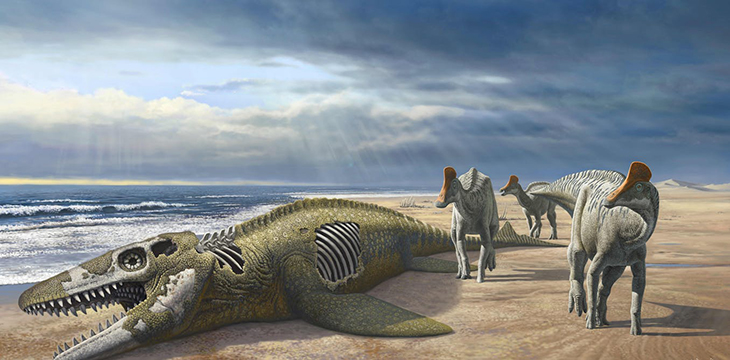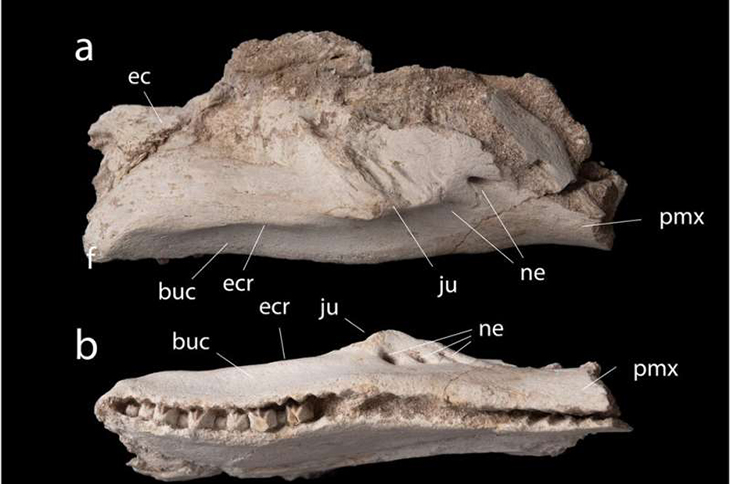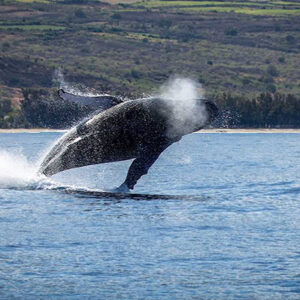
An extraordinary event in the annals of paleontology has been unveiled by an international coalition of researchers—a narrative of improbable migration that challenges conventional understanding. The discovery revolves around the presence of duck-billed dinosaurs, akin to ponies in size, in Africa some 66 million years ago. These creatures, believed to have originated in North America, somehow traversed vast expanses of ocean to reach what is now modern-day Morocco, defying the geographical barriers of their time.
Unearthed fossils, representing three distinct species of duck-billed dinosaurs, lay embedded in the Moroccan soil, painting a picture of a bygone era where Africa stood isolated by hundreds of miles of water from its neighboring continents. This revelation prompts a profound inquiry into the mechanisms by which these creatures undertook their remarkable journey.
The findings not only document the arrival of these prehistoric travelers but also attest to their flourishing existence on the African soil. Despite the odds stacked against them, the duck-billed dinosaurs adapted and diversified across their newfound territory, leaving an indelible mark on the continent’s ancient landscape.
The context of this extraordinary migration is set against the backdrop of the Cretaceous period’s twilight, characterized by rising sea levels and the gradual fragmentation of Pangaea. Africa, then an isolated island continent encircled by vast oceans, seemed an unlikely destination for creatures evolving thousands of miles away.
Yet, the unearthing of fossils belonging to a previously unknown species, Minqaria bata, reveals dimensions of this saga previously unknown. This pony-sized dinosaur, measuring between 9 and 12 feet in length and weighing around 500 pounds, shares striking anatomical similarities with its European counterparts, further deepening the mystery surrounding its presence in Africa.
Dr. Nicholas Longrich and his team, hailing from esteemed institutions across the globe, stand at the forefront of this scientific revelation. Their meticulous analysis and collaboration have shed light on a narrative once deemed improbable, suggesting that despite its incredulity, the scenario of these dinosaurs traversing oceans to colonize Africa is, indeed, the most plausible explanation.
This discovery challenges the boundaries of our understanding, offering a glimpse into a world where the improbable becomes reality. It underscores the resilience and adaptability of life forms in the face of daunting challenges, leaving an indelible mark on the tapestry of evolutionary history.
“It’s extremely improbable that dinosaurs could cross water to get to Africa,” he said. “But improbable isn’t the same as impossible. And given enough time, improbable things become probable.”
“Buy a lottery ticket every day, and if you wait long enough, you’ll win. These ocean crossings might be once-in-a-million-year events but the Cretaceous lasted nearly 100 million years.”
“A lot of strange things will happen in that time,” he suggested, “including dinosaurs crossing seas.”
The researchers drew parallels between the phenomenon of the crossing and the remarkable migrations of certain contemporary animals. For instance, they cited the case of over 15 iguanas swept from the Guadeloupe shores by a Caribbean hurricane in 2015, only to be found some 200 miles away on Anguilla a month later. Another example involved a tortoise native to Aldabra, which drifted ashore in Tanzania, a staggering 700 kilometers from its origin.
Moreover, historical evidence suggests that during the ice age, species such as deer, elephants, and hippos undertook swimming journeys to reach the Greek island of Crete.
“These duckbills are maybe the most surprising find of my career,”Dr. Longrich shared. “If you asked me what kind of dinosaurs we’d find in Africa, then a duckbill is the last thing I would have imagined, let alone three species.”

“There’s still so much unknown in the fossil record, but if there wasn’t, we wouldn’t need to keep collecting fossils.”
The initial species under scrutiny was labeled Minqaria bata, deriving its name from Arabic terms for ‘beak’ and ‘duck’. It bears a striking resemblance to the sole previously identified African species, Ajnabia odysseus. However, its jaw and tooth structures differ significantly, affirming its classification as a distinct species.
Another Moroccan species, Ajnabia, shares a similar size. Further examination of larger bones by the research team, such as an arm and a thigh bone, indicates the existence of a third species that attained considerable size, estimated to be between 15 to 18 feet in length.
“Not only did duckbills manage to reach Africa at the end of the Cretaceous,” Dr. Longrich added, “But once they did, they quickly evolved to take advantage of open niches and became diverse.”
During the conclusion of the Cretaceous period, elevated sea levels inundated significant portions of the continents, while the Earth’s landmasses underwent fragmentation due to the breakup of Pangaea and continental drift. Consequently, Africa found itself isolated amidst the ocean, resembling a solitary island continent akin to present-day Australia.
What are your thoughts? Please comment below and share this news!
True Activist / Report a typo



